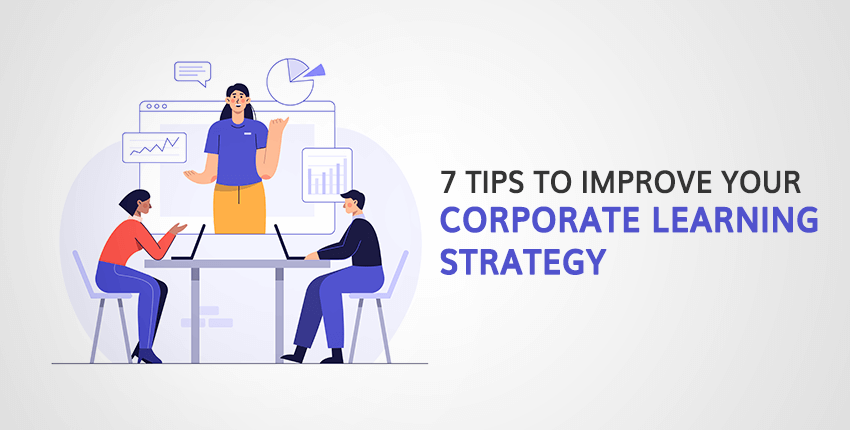- February 28, 2022
- Posted by: 10bits_mexican
- Category: Corporate Training

With the increasing changes in the market and the decreasing basic cognitive processes of individuals, corporate learning is of pivotal importance. To keep up with the swap in work modes to the remote, organizations take the assistance of several online systems that maintain the workers and ease their work.
Here are a few tips and tricks on improving corporate learning programs for your company:
1. Mission & Plan
The first step in learning strategy is to identify the imperative profile of your business. Next, define clear roles and responsibilities and evaluate the old ones for your employees for a continuous growth process. Finally, educating them on specific area-based knowledge and behavior is obligatory.
Formulated on this, choose the proper training for your organization and build skills from the corporate training consultants.
2. Sensing
Traditional market research to study and understand the behavior of the customers is replaced by market sensing.
Against the statistical results obtained from market research, market sensing is an approach to preferably understanding the market from the customer’s perspective and not the company’s.
It helps to recognize the outer market by the feedback method.
3. Education for new hires
To receive maximum from employees, they need to know about the organization and their overall role in the business. Several corporate training companies in the USA assist organizations with this.
Educate them on the history of the organization and appropriate workspace behavior, along with training them on specific job responsibilities.
4. Decide
Decide which tutoring is needed for new and old employees. Organizations should always encourage employees to complete certification and skill enhancement courses to increase their expertise.
While delivering in-office training, establish the best educating process for your company. For example, choose interactive corporate training companies to understand and help employees with their weaknesses.
5. Adopt flexible learning formats
A blended model, commonly a hybrid model, is the foremost method for balanced training programs. For example, In-office ILT or virtual ILT, eLearning, or social learning, your company should be flexible with all.
This helps employees to fit the training programs into their busy schedules with ease and learn when their concentration is maximum.
6. Evolve
With changing needs, the demand for faster and practical learning is gaining more importance than in the earlier years. A certificate or a degree fails to suffice unless an employee continuously learns and grows with the company.
It is a folly to assume corporate training would echo the same it resembled some 10 years back.
7. L&D measurement & processes
Knowledge-based economy means an energetic and informed workforce.
Learning and development play a focal role in the corporate world, shifting from testimonials to real-world experiences and continuous evolution.
Creating a value-based work culture and developing employee capabilities placed on that helps to build a stronger brand name for the organization.
The takeaways
Training the new employees is a must. Along with that, the old employees need to be educated on the new tools and evolving client needs. When employees actively engage with the learning process, their confinement with the organization increases resulting in more significant commitment.
